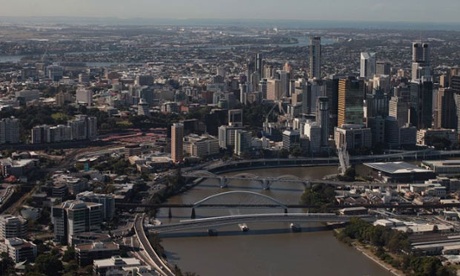
The influence of your home town, the place in which you while away those formative years of adolescence and early adulthood, can be hard to shake later in life. The particular angle at which sunlight strikes that town; the layout of its streets; its political, social and cultural landscape: these qualities affect your view of the world and the place of your home town within it. For David Malouf and the Go-Betweens, their shared home town of Brisbane becomes a character in their creative output, seen most obviously in Malouf’s first novel, Johnno, and also lurking on the Go-Betweens’ sixth album, 16 Lovers Lane.
Johnno is considered a heavily autobiographical novel, with the narrator, Dante, attending the same school and university as Malouf, and the book even borrowing the fact of Malouf’s schoolmate dying young. The eponymous Johnno is an exuberant breeze clearing out the stale air that Dante finds oppressive. Dante’s Brisbane of the 1950s is “nothing: a city that blew neither hot nor cold, a place where nothing happened, and where nothing would ever happen, because it had no soul”. Dante wonders, “Have I been shaped in any way – fearful prospect! – by Brisbane?”
It’s only in hindsight, from his vantage point in London, that he understands life in Brisbane may not have been as one-dimensional as he’d assumed. He is surprised to discover that Johnno, whose impulsive nature made his own existence feel staid, had thought Dante “the most exotic creature – so strange and untouchable. Like a foreign prince.” When Dante concludes of Johnno that “even the lies we tell define us”, he could as well be writing of the lies he’s told himself about Brisbane, and what he sees as its shallow intellectual pool.
The Go-Betweens are so beloved in their home town that they have a bridge named after them. They came of age during the Joh Bjelke-Petersen regime, when even pop music could constitute defiance against a brutal government. By 1989, when 16 Lovers Lane was released, Joh was gone and the Go-Betweens were recording in Sydney, but Brisbane still shines through on the album, most especially in the hit single Streets of Your Town, where “Don’t the sun look good today? / but the rain on its way”, which captures the changeable weather of a tropical city. The album also shares with Johnno that bittersweet melancholy of hindsight, which pours out in the ache of Quiet Heart and the nostalgia of Dive for Your Memory (“I’ll dive for your memory / We stood that chance”).
Is it a peculiarly Australian affliction that we cannot appreciate what our home towns have to offer until we’ve moved away? Or is this perhaps the burden borne by every home town, that it can only truly be seen with the benefit of perspective. Johnno and 16 Lovers Lane are at once illustrative of the “ordinariness” of Brisbane and evidence of the artistic accomplishments that are possible from its inhabitants.

